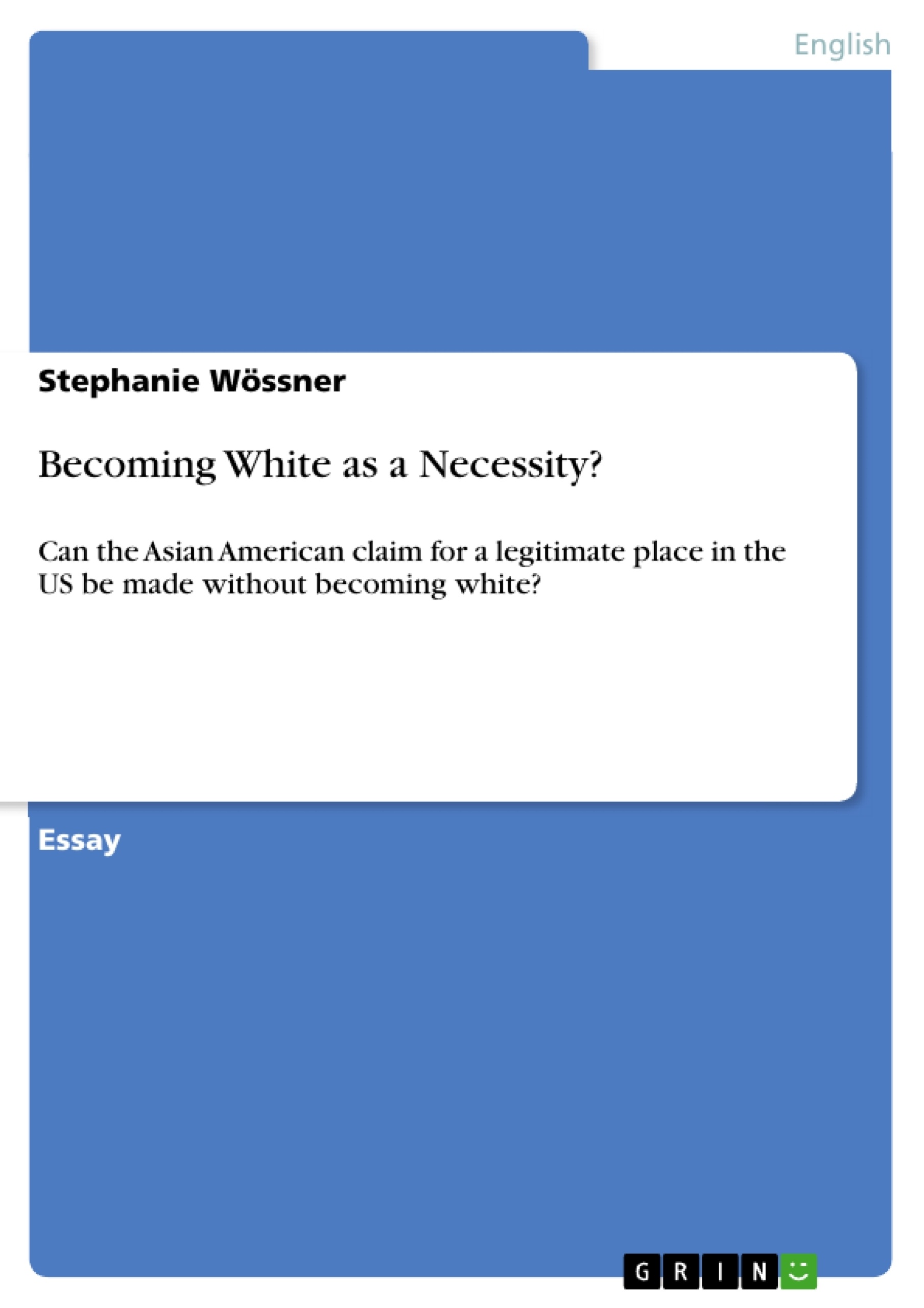Race in the US has always been defined in white and black categories. Groups who do not obviously fit in any of these two categories have had a hard time defining their own position within such a society, and society, likewise, has had a hard time to decide where to put them. Asians, mostly because of their outside appearance have usually been given a position in between black and white. Since the 1960s, they have, on the one hand, been pitted against Blacks as a “model minority” and, on the other hand, they have not been given equality with whites. White society has had a particular hard time attributing Filipinos and Asian Indians, who are today considered Asians, a racial category, for they do not look Asian and usually have a dark skin color. In the case of Asian Indians, there was also the issue that they are Caucasian. The dichotomy of white and black has also very often been associated with that of good and evil, smart and stupid, superior and inferior and the like. Because of this harsh opposition of black and white, without a gray zone in between, the question whether or not Asians have to become “white” in order to achieve the position or place they claim has to be considered very carefully.
Table of Contents
- The Question of Whiteness
- Whiteness and Power
- Whiteness and Social Position
- Whiteness and the Political Process
- Conclusion
Objectives and Key Themes
This essay explores the complex and multifaceted question of "whiteness" in the context of Asian American identity and the struggle for equality in the United States. The author analyzes how the concept of "whiteness" has been used to define citizenship, power, and social position, and how it has been both a barrier and a goal for Asian Americans.- The historical and ongoing role of "whiteness" in defining American identity and citizenship
- The relationship between "whiteness" and power, particularly in the context of colonialism and social hierarchies
- The diverse perspectives on "whiteness" among different Asian American groups and their impact on strategies for achieving equality
- The challenges of navigating a system of racial categorization that often forces individuals to conform to "white" norms in order to gain political power and influence
- The tension between maintaining ethnic and racial identity and the need for political participation, which may require adopting certain aspects of "whiteness."
Chapter Summaries
- The Question of Whiteness: This chapter introduces the central question of the essay: whether or not Asian Americans have to become "white" to achieve the position they claim. The author argues that the term "white" is complex and subjective, and the "place" Asian Americans claim is not a universal goal. The chapter also discusses the limitations of using the categories of "white," "black," and "people of color" in the same context.
- Whiteness and Power: This chapter examines how the term "white" has been used to grant citizenship and exclude certain groups. It explores the case of Asian Indians, who were declared both "white" and "non-white" in different court decisions. The author argues that "whiteness" is often associated with power, and achieving this position may require adopting "white" behavior. The chapter also examines how Native Hawaiians perceive Asian Americans as "white" due to their position of power.
- Whiteness and Social Position: This chapter explores how different minority groups associate "whiteness" with power and class. The author uses the example of the 1992 L.A. race riots to show how Koreans were perceived as "white" by Blacks due to their economic position. The chapter also discusses the diverse perspectives on "whiteness" within the Asian American community, with some groups seeking assimilation and others striving for de-colonization.
- Whiteness and the Political Process: This chapter examines the role of race in the political process and the distribution of resources. The author argues that achieving political power may require Asian Americans to adopt certain aspects of "whiteness" despite the potential for losing their cultural identity. The chapter also considers the limitations of relying on redress legislation as a solution for achieving equality.
Keywords
This essay explores key terms and concepts related to race, ethnicity, and power in the United States, including "whiteness," Asian American identity, assimilation, de-colonization, political participation, and the distribution of resources. The author examines the complex relationship between these factors and the challenges faced by Asian Americans in achieving equality within a racially stratified society.- Quote paper
- B.A. Stephanie Wössner (Author), 2002, Becoming White as a Necessity? , Munich, GRIN Verlag, https://www.grin.com/document/138108




